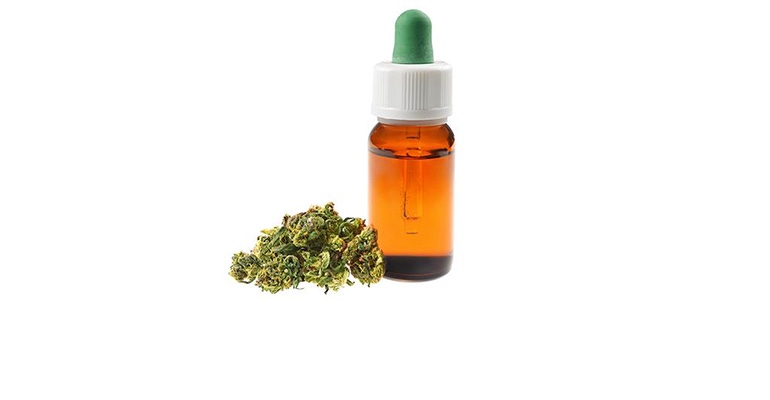Recent moves made by the Federal Drug Administration indicate that the agency is getting its ducks lined up in a row.

FDA action taken this month offers clues a big clue as to what we might expect out of the burgeoning yet still uncertain picture of hemp CBD.
At first it might seem unrelated—the FDA sent a warning letter to a supplements company selling N-acetyl cysteine (NAC), which is a common amino acid found in many supplements that’s been on the market since 1975.
In that letter, the FDA asserted that NAC had been approved as a pharmaceutical drug back in 1963 and, under the so-called exclusionary clause in the federal Food Drug and Cosmetics Act, NAC does not fit the definition of a dietary ingredient because it was first declared a drug by the FDA.
“Therefore, the preemption provision kicks in, and NAC loses its dietary ingredient status and must come off the market,” said Loren Israelsen, president of the United Natural Products Alliance. “I will now state the obvious. This is exactly the problem we are having with CBD today.”
Does NAC equal CBD?
On July 23, the FDA sent a warning letter to Purple Biosciences, which charges that the company’s Purple Tree product—a multivitamin that also contains DHM, an extract from the Japanese raisin tree, as well as white willow bark and milk thistle—was guilty of using unapproved drug-disease claims.
But then—“and this is what’s new,” says Israelsen—the FDA states that the product is labeled as a dietary supplement but the NAC in it was approved as a drug on Sept. 14, 1963, so the supplement product must come off the market.
You might wonder why on earth would the FDA wait nearly half a century after NAC first came on the market to declare a supplement ingredient illegal.
It shows three things.
One, the wheels of progress really do turn slowly—the FDA is perfectly capable of slow-dancing to the point of ridiculousness anything it pleases.
Two, if you are expecting any sort of quick regulatory action from the FDA to supply certainty over hemp CBD, well, don’t be too sure about that.
Three, the FDA might be using this preemption enforcement action to build its preemption case to be used soon enough on CBD.
The cost of inaction
When former FDA commissioner Scott Gottlieb, MD, upon his departure from the agency in April 2019, said it would take three to five years for the FDA to issue a declaration of its position vis a vis hemp CBD, his statement was met with incredulity from all comers. The agency, said observers, could not possibly wait that long because the market was demanding certainty so everyone from farmers and extractors to hemp CBD brands and retailers—not to mention would-be heavyweights like major CPG brands the likes of Pepsi and Unilever—could get on with the business of producing, formulating and selling the first real new, exciting ingredient to come to the market in decades.
So, despite the passage of the 2018 farm bill—which led directly to a massive production season of 2019 when hemp acreage skyrocketed from 2018’s 78,000 acres to 2019’s nearly half a million acres—the twin government regulatory bodies, FDA and USDA, did not seem to get the memo that this was an ingredient not only consumers but also Congress itself which wrote the law was looking forward to bringing to the world.
The two regulatory bodies instead have treated hemp not as a new American commodity crop ready to join corn and soybeans with their 90 million acres of fields, but rather as a close cousin to marijuana, an illegal controlled substance, one which needed close watch by the Drug Enforcement Agency (and nevermind that the DEA was explicitly written out of the picture in the 2018 farm bill) and really was something the FDA and USDA would rather not have to deal with.
“The FDA handed the White House some guidance and are waiting to hear back. Some people are thinking we are going to hear something in a few weeks,” said Jessica Mulligan, co-founder of Winged, a CBD-forward brand. “But I’ve heard that for a few years now.”
Tennessee farmer Frederick Cawthon, whose business acumen led him, like so many others, to ditch his previous career and join the hemp revolution, put together a hemp business highlighted by an 85-acre grow in 2019, found he had a difficult time selling all that hemp in a saturated market. He stored much of the harvest in a barn, and in 2020 dialed it back to only 15 acres.
“Our barns and our warehouses would be empty right now if we had clarity on the rules,” said Cawthon. “Every company would be trying to figure out how to introduce this into their various product lines or coming out with new product lines. Go into a Publix or a Kroger, hemp would be across the board in milk, in chips, every product you can think about that’s food and drinks—sodas and juices, teas—it would be in everything.”
Who’s side is time on?
So, despite the 2018 farm bill approving the production of hemp from coast to coast, and despite food, beverage and supplements companies formulating hemp CBD into a wide diversity of products, and despite Congress allocating millions of dollars to the FDA so that the agency has the resources to properly build a regulatory apparatus so all players have certainty, and despite “epilepsy moms” clamoring for the ingredient to help their small children from seizures, the picture from the FDA has always been to treat CBD as a pharmaceutical drug only.
It has made that declaration clear in warning letters it sent out in 2016 and again in 2019.
“Aside from one prescription drug approved to treat two pediatric epilepsy disorders, these products have not been approved by the FDA and we want to be clear that a number of questions remain regarding CBD’s safety,” said FDA principal deputy commissioner Amy Abernethy, M.D., Ph.D. “We remain concerned that some people wrongly think that the myriad of CBD products on the market, many of which are illegal, have been evaluated by the FDA and determined to be safe, or that trying CBD ‘can’t hurt.’”
Abernethy might not be familiar with the 1994 Dietary Supplements Health and Education Act, which regulated supplements as foods and not drugs—so just as a farmer does not need FDA pre-authorization before a new hybrid of artichoke comes on the market, neither do supplements need any pharmaceutical-style pre-market authorization from the FDA.
The NAC story seems to show that the agency is building a case with the precedent—even after 45 years—so that CBD will be available only by prescription. Not as a supplement. Not as an additive in sodas and ice creams and brownies and other baked goods. Nope. After all, “drug” is the FDA’s middle name!
The crystal ball says...
So we can see that Gottlieb was not joking when he said three to five years before the FDA comes out with some grand pronouncement.
This will leave the big boys—from major CPG grands to big box retailers—on the sidelines. It will keep hemp CBD stuck in idle despite the market demand.
And so we can expect the agency will, say in 2023, to much fanfare declare that CBD is a drug only.
We also know that the FDA is not an enforcement agency, and stuffing that genie back into the bottle is a “fool’s game,” as current FDA commissioner Stephen Hahn, M.D., said in February 2020.
But it will create a groundswell of opposition led by the epilepsy moms, who in 2024 will ring the phones and bang on the doors of Congress.
Congress will have to act.
So, despite the FDA’s meticulous path of continuous communications with Congress and the public that CBD is a dangerous ingredient to be taken only via a doctor’s prescription, Congress will write a simple law giving the FDA and USDA the memo that, no, the agency really does have to provide a path forward so everyone can get in on with the business of all things hemp, from medicine to biofuel, bioplastics to building materials in cars and houses.
We’ve seen this game before
In 1976—coincidentally just a year after N-acetyl cysteine came on the market as a dietary supplement—Congressman William Proxmire authored the famous “Proxmire Amendment” that chastened the FDA, which had declared that the FDA could regulate out of existence any high-dose supplements, making 500 mg vitamin C (among other high dose vitamins) available only by prescription.
That led directly, albeit two decades later, to the passage of the seminal 1994 DSHEA, which supercharged the supplements business by declaring that dietary supplements should be regulated not as drugs but as foods. This meant that the FDA was specifically not in the business of pre-approving supplements like it does with drugs, but can intervene in the business only if it declares after the fact that a supplement is unsafe like it does with romaine lettuce and cantaloupe.
We’ve seen this game before.
See you in 2025. And—who knows—maybe 2065. It’s not like the FDA has any trouble waiting 45 years after the fact to get things done.
About the Author(s)
You May Also Like




